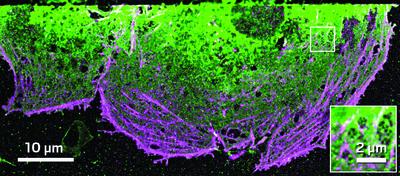Advertisement
Grab your lab coat. Let's get started
Welcome!
Welcome!
Create an account below to get 6 C&EN articles per month, receive newsletters and more - all free.
It seems this is your first time logging in online. Please enter the following information to continue.
As an ACS member you automatically get access to this site. All we need is few more details to create your reading experience.
Not you? Sign in with a different account.
Not you? Sign in with a different account.
ERROR 1
ERROR 1
ERROR 2
ERROR 2
ERROR 2
ERROR 2
ERROR 2
Password and Confirm password must match.
If you have an ACS member number, please enter it here so we can link this account to your membership. (optional)
ERROR 2
ACS values your privacy. By submitting your information, you are gaining access to C&EN and subscribing to our weekly newsletter. We use the information you provide to make your reading experience better, and we will never sell your data to third party members.
Analytical Chemistry
Faster, Better Infrared Imaging
Analytical Chemistry: Multiple synchrotron beams improve speed and resolution of IR chemical imaging
by Celia Henry Arnaud
March 28, 2011
| A version of this story appeared in
Volume 89, Issue 13
A new synchrotron-based infrared imaging system allows scientists to collect images with the best resolution available—limited only by the diffraction property of light—across the entire IR spectrum in a fraction of the time of conventional IR imaging systems (Nat. Methods, DOI: 10.1038/nmeth.1585). IR chemical imaging usually requires a substantial trade-off between spatial resolution and acquisition time.

“We’re able to measure at the diffraction limit at all wavelengths rapidly,” says Carol J. Hirschmugl, a physics professor at the University of Wisconsin, Milwaukee, and one of the team leaders. An image that would have taken 11 days to acquire, she says, now takes only 20 minutes.
In the new system, Hirschmugl; Michael J. Nasse, a physicist at the University of Wisconsin, Madison; and coworkers optically maneuver 12 beams from Madison’s IRENI (IR environmental imaging) synchrotron beamline into a 3 × 4 array that illuminates a 50- × 50-μm area on sample surfaces. They defocus the beams enough to get homogeneous illumination that covers almost as broad an area as a conventional thermal IR source but is much brighter.
Because the light is so bright, they are able to use a much higher magnification objective than can be used with conventional IR sources. The effective pixel size is 0.54 × 0.54 μm, which is one-hundredth the area of pixels in other systems.
“We didn’t expect that we would get as high spatial resolution as we’re getting,” Hirschmugl says. “It is definitely as good as can be done” without using near-field optics to break the diffraction limit.
Working with Rohit Bhargava, a bioengineering professor at the University of Illinois, Urbana-Champaign, the team used the system to obtain diffraction-limited images of prostate and breast tissue pathology samples.
The work is a “major advance” in the development of IR spectroscopy for chemical imaging, says Francis L. Martin, a researcher at the Centre for Biophotonics at Lancaster University, in England. “This work demonstrates what is achievable with IR spectroscopy and will lend impetus to the future development of IR microscopes for routine usage in clinical practice and in the biological laboratory.





Join the conversation
Contact the reporter
Submit a Letter to the Editor for publication
Engage with us on Twitter